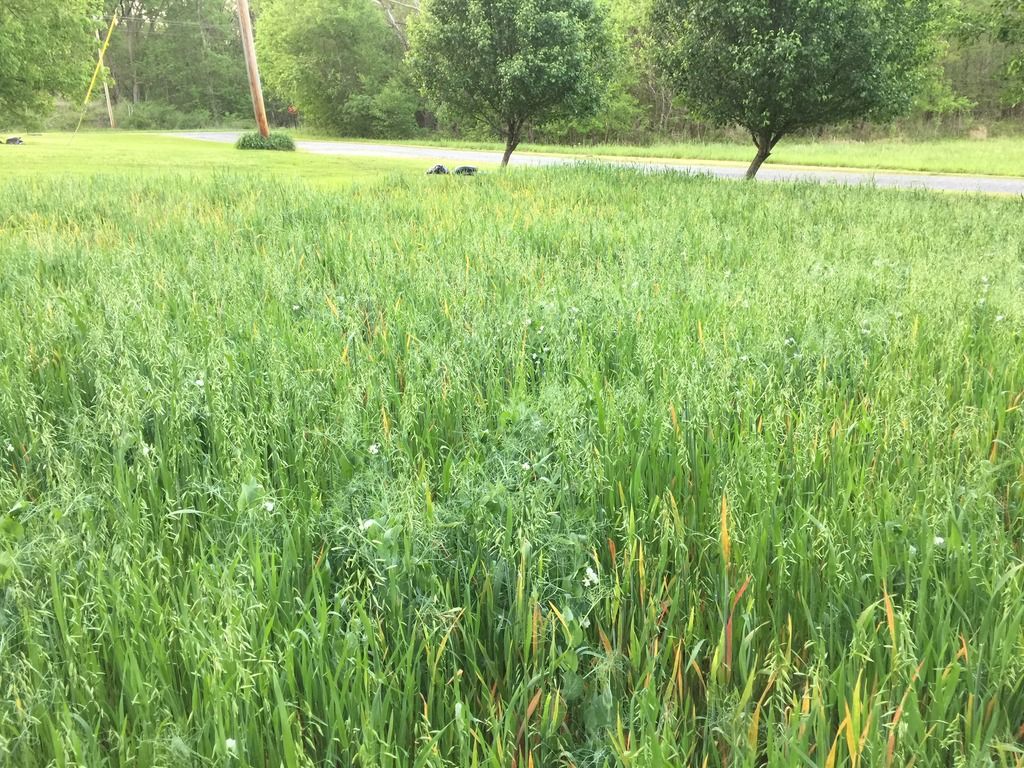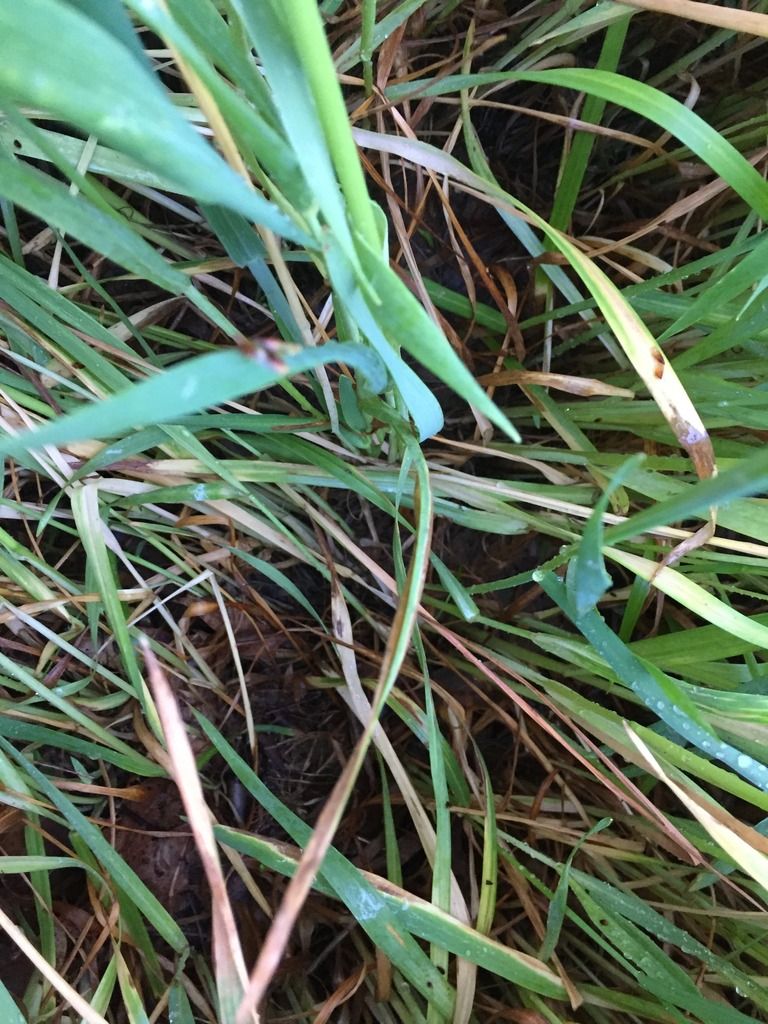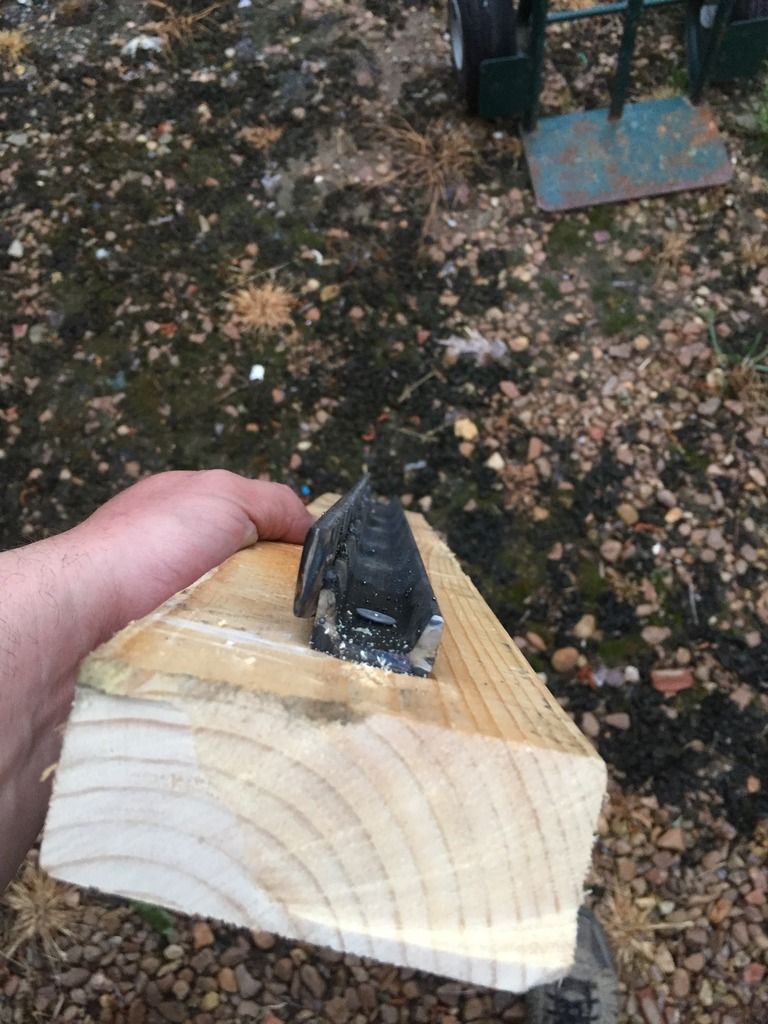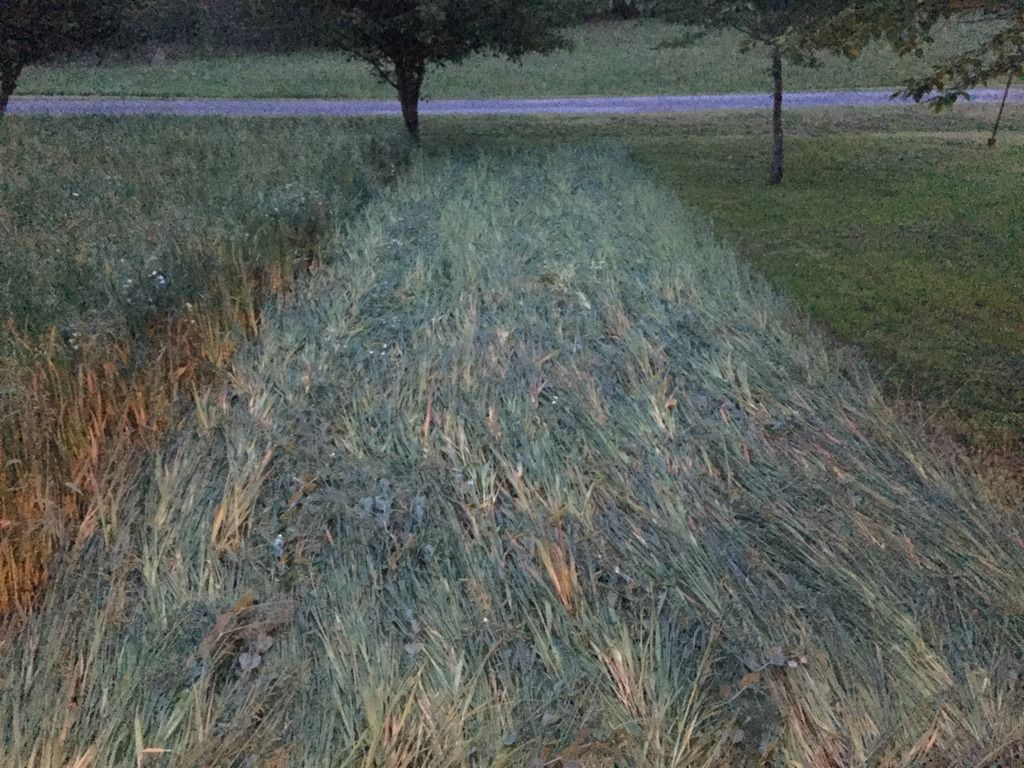i went with a mix of winter oats and austrian winter peas(planted in rows). they are about chest high and in flowering stage ready to crimp.
 [/URL]
[/URL]
look maw, no weeds under the covers amd good moisture retention. soil is still spongy, not compacted.
 [/URL]
[/URL]
here is the tool i made for hand crimping, 2ft 2in piece of 2x4, 2ft piece of 1 1/4" angle iron(i had to improvise as tsc was sold out of angle), drill 2 holes in angle iron and secure with big screws to 2x4, drill 1 hole on each side of 2x4 for the rope. make a loop with some rope about waist high and your done. took all but 15 minutes including welding that i had to do to make my angle iron lol.
 [/URL]
[/URL]
looks pretty good to me. a little rain will stick it and be ready to plant in 10 days or so.
 [/URL]
[/URL]
update:
final result this year, ALMOST no tilling lol. as i explained in earlier threads, this spot at my new house was basically compacted clay and subsoil that the builders used as a dump site. the first year i dug all kinds of crap out of the soil, bricks, rocks, pieces of metal, etc. i pulled enough river rock out to totally landscape the front of my house lol.
ive always planted some type of cover but i usually lightly tilled under about 2 inches. this year i crimped,(albeit i had to run over it about 3 times before all of it stayed down) and weed eated where my rows were going. then i took a garden spade and gently lifted about every 10 inches. i was delighted when the spade sunk in deep with very little effort and i could see the worms in the soil, a good sign. then i took a hoe a furrowed my rows. easy peasy. took maybe an hour and this plot is about 4-5k ft. the oats are awesome and much better that wheat straw mulch although i always mulch tomatoes to prevent splash ups and disease. i also do crop rotation, for example, corn was planted where beans where last year and vise versa. this allows the corn to pick up left behind bean nitrogen as well as the winter pea nitrogen so i shouldnt have to add much fertilizer if any at all although corn is a heavy feeder. the rest of the vegetables were rotated as well as this keeps the soil nutrient balanced and keeps pests at bay.
here is the result:

look maw, no weeds under the covers amd good moisture retention. soil is still spongy, not compacted.

here is the tool i made for hand crimping, 2ft 2in piece of 2x4, 2ft piece of 1 1/4" angle iron(i had to improvise as tsc was sold out of angle), drill 2 holes in angle iron and secure with big screws to 2x4, drill 1 hole on each side of 2x4 for the rope. make a loop with some rope about waist high and your done. took all but 15 minutes including welding that i had to do to make my angle iron lol.

looks pretty good to me. a little rain will stick it and be ready to plant in 10 days or so.

update:
final result this year, ALMOST no tilling lol. as i explained in earlier threads, this spot at my new house was basically compacted clay and subsoil that the builders used as a dump site. the first year i dug all kinds of crap out of the soil, bricks, rocks, pieces of metal, etc. i pulled enough river rock out to totally landscape the front of my house lol.
ive always planted some type of cover but i usually lightly tilled under about 2 inches. this year i crimped,(albeit i had to run over it about 3 times before all of it stayed down) and weed eated where my rows were going. then i took a garden spade and gently lifted about every 10 inches. i was delighted when the spade sunk in deep with very little effort and i could see the worms in the soil, a good sign. then i took a hoe a furrowed my rows. easy peasy. took maybe an hour and this plot is about 4-5k ft. the oats are awesome and much better that wheat straw mulch although i always mulch tomatoes to prevent splash ups and disease. i also do crop rotation, for example, corn was planted where beans where last year and vise versa. this allows the corn to pick up left behind bean nitrogen as well as the winter pea nitrogen so i shouldnt have to add much fertilizer if any at all although corn is a heavy feeder. the rest of the vegetables were rotated as well as this keeps the soil nutrient balanced and keeps pests at bay.
here is the result:

